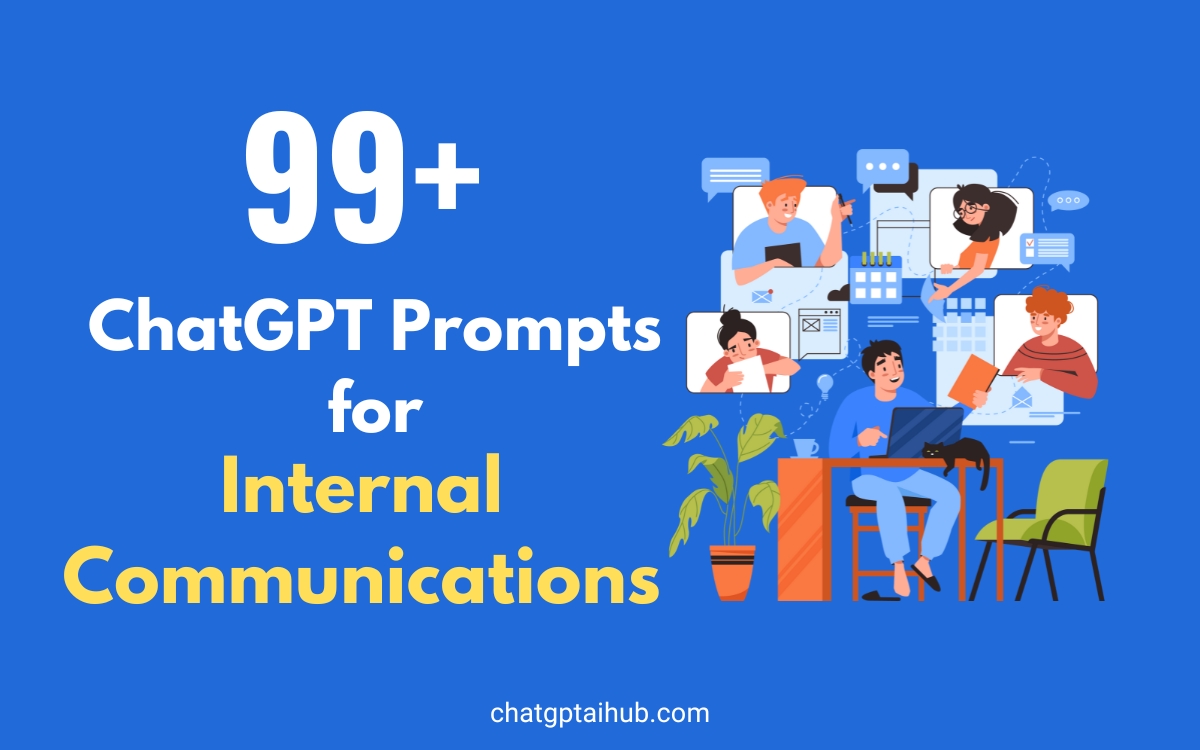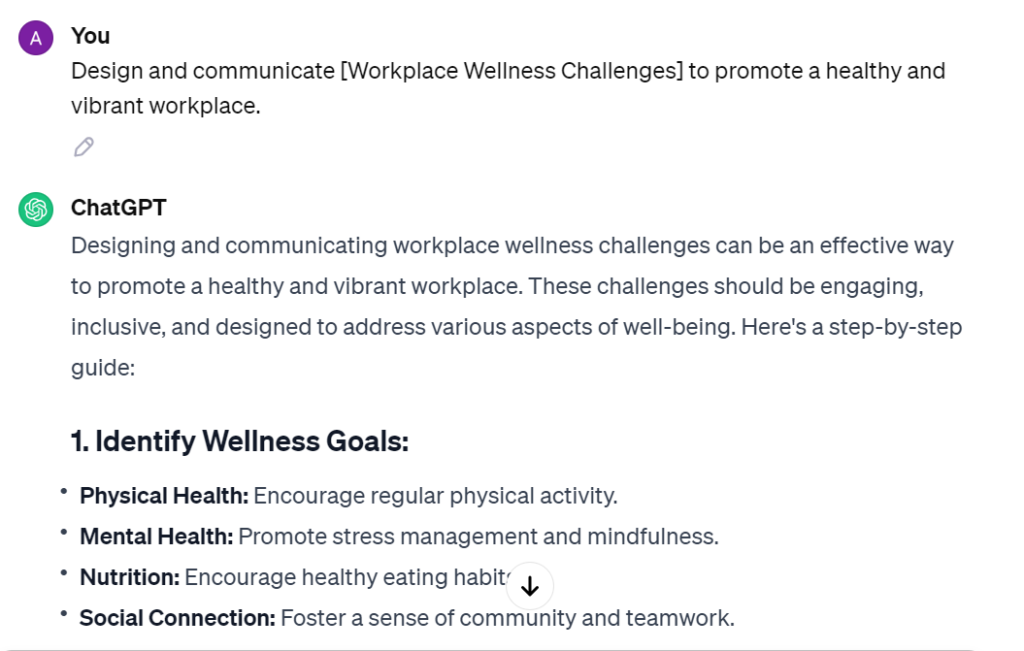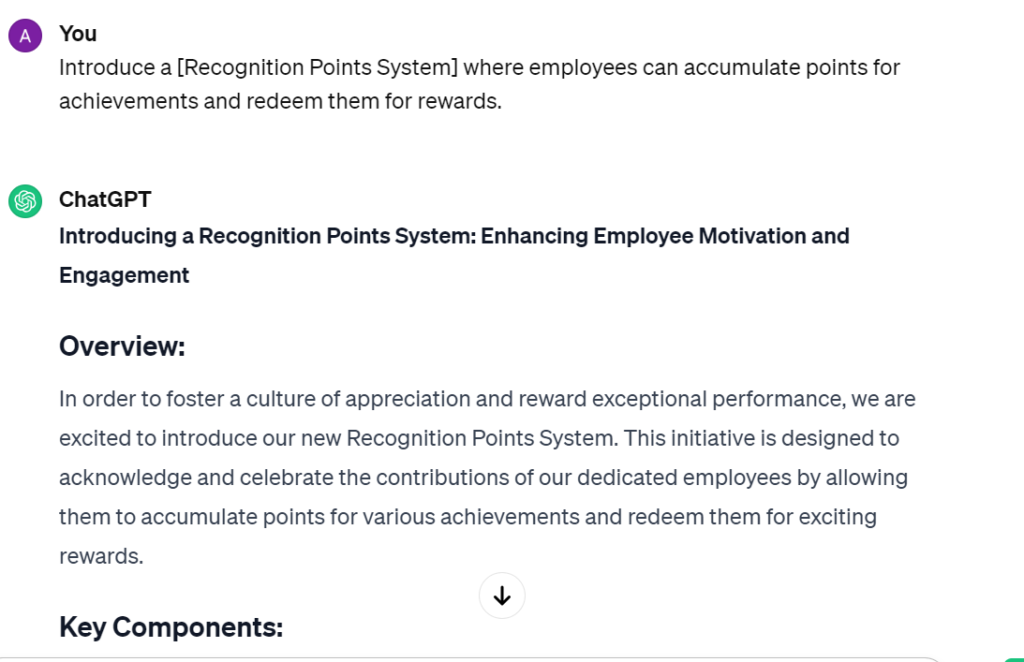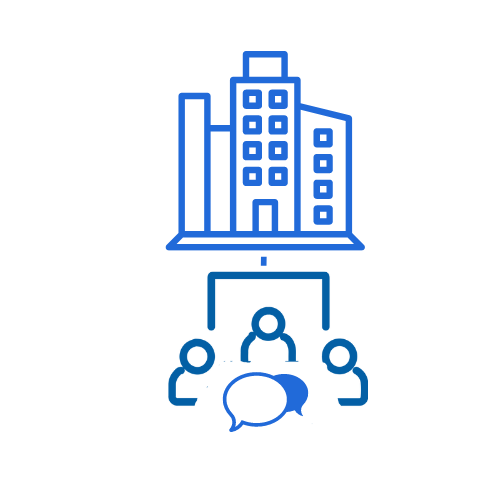99+ Strategic ChatGPT Prompts for Internal Communications Building Effective Conversations

Is your organization aware of the benefits of ChatGPT Prompts for Internal Communications? From policy announcements to employee recognition, these Power Packed ChatGPT Prompts offer a simple yet powerful tool to enhance your internal communications effortlessly.
Navigating effective workplace communication can be tricky for many. They struggle with effectively bridging the gap, leading to a communication disconnect in conveying important messages within a workplace. Simplifying this process is crucial for fostering better dialogues among team members.
Transfer traditional methods of communication with ChatGPT prompts for internal communications, providing you with practical insights to enhance your internal communications effortlessly. This article is your gateway to enhance workplace dialogues, making your communication game strong and effective.
How ChatGPT Prompts for Internal Communications will Improve Workplace Engagement
Studies show that organizations with strong internal communications are 20% more likely to report high employee engagement. Imagine effortlessly improving your workplace dialogues and communication strategy, boosting not only efficiency but also your professional reputation.
Better communication isn’t just a soft skill; it impacts profit margins and customer satisfaction. Diving into ChatGPT prompts for internal communications isn’t just about words; it’s about powering up your workplace impact.
Enhance Workplace Dialogue Quality with ChatGPT’s Premier Prompt for Internal Communications
Act as an Internal Communications Specialist in [industry]. Write an engaging text for each query. You must ask me enough questions before creating a confident response. Present all the answers in a table.
Firstly, write some effective strategies to announce a [Input new policy or procedure] to our employees and ensure they understand the [Input desired outcome]. Explain the [Input benefits] this policy will bring. Keep it clear and concise. Secondly, suggest the best practice of communicating an upcoming [Input training session or event] to employees and ensuring they are aware of its [Input importance] and explain to them the professional development opportunities these sessions hold.
Thirdly, tell me about some creative ways to announce [Input company successes or milestones] to employees and encourage them to strive for similar goals. Suggest me advice on how to communicate difficult news, such as [latest difficult news], in a sensitive and effective manner within the company, while maintaining confidentiality and respect for those involved.
Explain to me how to encourage employees to give feedback on their experiences at the company, and how can I ensure that their feedback is taken seriously and acted upon?
How can I effectively communicate the company’s mission, vision, and values to employees, and how can I ensure that they understand how their work supports these goals? What strategies can I use to promote a positive company culture, and how can I communicate these values to employees to help them feel more engaged and motivated?
3+ Engaging ChatGPT Prompts for Internal Communications
- Announcing New Policy or Procedure:
Effective strategies to announce a [Input new policy or procedure] to our employees and ensure they understand the [Input desired outcome]. Explain the [Input benefits] this policy will bring. Keep it clear and concise.
- Communication for Upcoming Training Session or Event:
Suggest the best practice for communicating an upcoming [Input training session or event] to employees, ensuring they are aware of its [Input importance]. Explain the [Input professional development opportunities] these sessions hold.
- Creative Announcement of Company Successes:
Share creative ways to announce [Input company successes or milestones] to employees and encourage them to strive for similar goals.
- Employee Feedback:
Explain how to encourage employees to give feedback on their experiences at the company. Also, discuss how to ensure that their feedback is taken seriously and acted upon.

99+ Smart ChatGPT Prompts for Internal Communications Enabling Clear Conversations
1. Employee Engagement:
Share effective strategies to enhance [Employee Engagement] within the organization.
2. Remote Work Communication:
Share tips for maintaining strong communication and collaboration among [Remote or Distributed Teams].
3. Policy Implementation:
Share best practices for successfully implementing and communicating new [Policy or Procedure] to employees.
4. Training and Development:
How can we effectively communicate upcoming [Training Session or Event] and development opportunities to ensure employee participation?
5. Recognition Programs:
Explore creative ways to recognize and celebrate [Employee] achievements and milestones.
6. Crisis Communication:
Provide guidance on communicating effectively during times of [Crisis or Unexpected Challenges] within the organization.
7. Leadership Communication:
Discuss strategies for leaders to communicate effectively with employees, fostering trust and transparency.
8. Diversity and Inclusion Communication:
How can we communicate our commitment to [Diversity and Inclusion] within the company and engage employees in related initiatives?
9. Health and Wellness Communication:
Explore ways to communicate and promote [Health and Wellness] programs within the organization.
10. Feedback Channels:
Establish effective [Feedback] channels for employees to share their thoughts, concerns, and suggestions.
11. Employee Onboarding Communication:
Develop a comprehensive communication plan for onboarding new employees and integrating them into the company culture.
12. Internal Events Communication:
Share strategies for promoting and communicating [Internal Events] to ensure high attendance and participation.
13. Change Management Communication:
Discuss communication strategies to facilitate smooth transitions during organizational changes or restructuring.
14. Internal Newsletters:
How can we create engaging [Internal Newsletters] to keep employees informed and involved in company updates?
15. Workplace Wellness Challenges:
Design and communicate [Workplace Wellness Challenges] to promote a healthy and vibrant workplace.

16. Employee Recognition Programs:
Develop effective communication plans for [Employee Recognition Programs] to boost morale and motivation.
17. Technology Adoption Communication:
How can we communicate the benefits and usage of [New Technologies] introduced in the workplace?
18. Team Building Activities:
Share ideas for communicating and organizing [Team Building Activities] to strengthen team dynamics.
19. Career Development Opportunities:
Communicate [Career Development Opportunities] to employees and encourage professional growth.
20. Corporate Social Responsibility Communication:
Discuss ways to effectively communicate the organization’s commitment to [Corporate Social Responsibility] and involve employees in related initiatives.
21. Employee Well-being Programs:
How can we communicate and encourage participation in [Employee Well-being Programs] to enhance overall staff wellness?
22. Goal Setting and Performance Reviews:
Discuss effective communication strategies for goal setting and conducting [Performance Reviews] to drive employee growth and satisfaction.
23. Internal Knowledge Sharing:
Explore ways to foster a culture of [Internal Knowledge Sharing] to improve collaboration and innovation within the organization.
24. Employee Benefits Communication:
How can we effectively communicate and educate employees about [Employee Benefits] to ensure they fully understand and utilize the offerings?
25. Company Anniversaries and Milestones:
Share creative approaches to celebrate [Company Anniversaries and Milestones] and instill a sense of pride and accomplishment among employees.
26. Sustainable Practices Communication:
Discuss communication strategies to highlight and engage employees in [Sustainable Practices] and environmental initiatives.
27. Inclusive Communication Language:
How can we ensure our communication uses [Inclusive Language] to create a workplace culture that values diversity?
28. Internal Social Platforms:
Explore the benefits and best practices of using [Internal Social Platforms] to enhance communication and collaboration among employees.
29. Mentorship Programs Communication:
Communicate the benefits and encourage participation in [Mentorship Programs] to facilitate professional growth and knowledge transfer.
30. Employee Surveys and Feedback:
Establish effective methods for conducting [Employee Surveys and Feedback] sessions to gather valuable insights for continuous improvement.
31. Crisis Preparedness Communication:
Develop communication plans for [Crisis Preparedness] to ensure employees are informed and feel secure during unexpected events.
32. Employee Resource Groups (ERGs):
How can we promote and communicate the benefits of participating in [Employee Resource Groups (ERGs)] to foster a sense of belonging?
33. Cross-Departmental Collaboration:
Discuss strategies for improving [Cross-Departmental Collaboration] through effective communication and shared goals.
34. Work-Life Balance Initiatives:
Communicate initiatives that support [Work-Life Balance] and employee well-being, ensuring a harmonious integration of work and personal life.
35. Flexible Work Arrangements:
How can we effectively communicate and manage [Flexible Work Arrangements] to accommodate diverse employee needs and preferences?
36. Employee Recognition Nomination Process:
Develop a transparent and inclusive process for [Employee Recognition Nominations], encouraging a culture of appreciation.
37. Cybersecurity Awareness Communication:
Share strategies for raising [Cybersecurity Awareness] among employees to mitigate risks and ensure data protection.
38. Employee Learning and Development Pathways:
Communicate clear pathways for [Employee Learning and Development] to empower staff in their professional growth journey.
39. Social Responsibility Impact Reports:
Discuss ways to communicate the impact of [Social Responsibility Initiatives] through engaging reports and storytelling.
40. Workplace Diversity Celebrations:
How can we communicate and celebrate various cultural events and observances to promote [Workplace Diversity] and inclusion?
41. Employee Recognition:
Explore innovative ways to recognize and appreciate employees beyond traditional methods, fostering a culture of [Employee Recognition].
42. Clear Communication Channels:
How can we optimize and streamline [Communication Channels] within the organization to ensure timely and transparent information flow?
43. Employee Town Hall Meetings:
Discuss effective strategies for organizing and communicating key messages during [Employee Town Hall Meetings] to engage the entire workforce.
44. Internal Branding Initiatives:
Communicate and reinforce the organization’s brand internally through impactful [Internal Branding Initiatives] that resonate with employees.
45. Employee Advocacy Programs:
Develop and communicate strategies for implementing [Employee Advocacy Programs] to amplify the organization’s presence on social media.
46. Mental Health Support Communication:
How can we sensitively communicate the availability of [Mental Health Support] services and resources to employees?
47. Learning and Development Opportunities Catalog:
Create and communicate a comprehensive catalog of [Learning and Development Opportunities] to empower employees in choosing relevant training.
48. Employee Volunteering Programs:
Encourage and communicate the benefits of [Employee Volunteering Programs] to contribute to the community while fostering teamwork.
49. Flexible Benefits Packages:
Communicate the flexibility and variety offered in [Flexible Benefits Packages] to cater to the diverse needs of employees.
50. Employee Podcasts or Webinars:
Explore the use of [Employee Podcasts or Webinars] as a dynamic and engaging communication method for sharing information and insights.

51. Continuous Improvement Feedback Loops:
Establish feedback loops for [Continuous Improvement] to involve employees in identifying areas for enhancement and innovation.
52. Employee Recognition Wall:
Create a virtual or physical [Employee Recognition Wall] to publicly celebrate individual and team accomplishments within the organization.
53. Health and Safety Communication:
Develop clear communication plans for [Health and Safety] protocols to ensure employees are informed and feel secure in their work environment.
54. Employee Anniversary Celebrations:
Communicate and celebrate the tenure of employees through personalized [Employee Anniversary Celebrations] to boost morale.
55. Innovation Challenges Communication:
Foster a culture of innovation by communicating and encouraging participation in [Innovation Challenges] to solve business challenges.
56. Diversity and Inclusion Workshops:
Develop and communicate a series of [Diversity and Inclusion Workshops] to educate and raise awareness among employees.
57. Employee Storytelling Platforms:
Implement and communicate platforms that allow employees to share their stories, contributing to a culture of [Employee Storytelling].
58. Recognition through Digital Platforms:
Utilize digital platforms for [Employee Recognition] to create a real-time and interactive acknowledgment system.
59. Employee Appreciation Events:
Plan and communicate [Employee Appreciation Events] that go beyond the ordinary to express gratitude and build a positive work environment.
60. Environmental Sustainability Communication:
Communicate the organization’s commitment to [Environmental Sustainability] by sharing initiatives and encouraging employee involvement.
61. Employee Skill Showcases:
Encourage employees to showcase their skills through periodic [Employee Skill Showcases], fostering a culture of continuous learning and collaboration.
62. Inclusive Decision-Making Communication:
Develop communication strategies to involve employees in [Inclusive Decision-Making], ensuring diverse perspectives are considered.
63. Employee Well-being Challenges:
Communicate and organize [Employee Well-being Challenges] to promote holistic health and work-life balance among the workforce.
64. Gamification in Learning:
Explore the use of gamification techniques in [Learning and Development] programs to make training engaging and enjoyable.
65. Employee Recognition Nomination Campaigns:
Launch creative campaigns to encourage widespread participation in [Employee Recognition Nominations], celebrating achievements at all levels.
66. Internal Expert Speaker Series:
Initiate an [Internal Expert Speaker Series] where employees can share their expertise, enhancing knowledge-sharing within the organization.
67. Cultural Exchange Initiatives:
Communicate and encourage participation in [Cultural Exchange Initiatives] to celebrate diversity and promote cross-cultural understanding.
68. Innovation Hub Communication:
Establish an [Innovation Hub] and communicate its role in fostering creativity, idea generation, and collaborative problem-solving.
69. Employee-Led Learning Circles:
Facilitate [Employee-Led Learning Circles] where individuals with similar interests can collaborate and learn from each other.
70. Virtual Team Building Activities:
Communicate and organize engaging [Virtual Team Building Activities] to strengthen team bonds in remote or hybrid work settings.
71. Employee Spotlight Interviews:
Conduct regular [Employee Spotlight Interviews] to showcase individual stories, experiences, and contributions within the organization.
72. Digital Skills Training:
Communicate the importance of acquiring and enhancing [Digital Skills] through targeted training programs to keep pace with technological advancements.
73. Employee Volunteer Recognition:
Develop communication strategies to recognize and celebrate employees involved in [Volunteer Initiatives], contributing to social causes.
74. Diversity and Inclusion Scorecards:
Implement and communicate [Diversity and Inclusion Scorecards] to track progress and transparently share diversity metrics with employees.
75. Employee Recognition Points System:
Introduce a [Recognition Points System] where employees can accumulate points for achievements and redeem them for rewards.

76. Learning Paths for Career Growth:
Communicate clear [Learning Paths for Career Growth] to help employees understand opportunities for advancement within the organization.
77. Employee Mental Wellness Resources:
Provide comprehensive communication about available [Mental Wellness Resources] to support employees’ emotional and mental well-being.
78. Remote Work Best Practices:
Communicate and share [Remote Work Best Practices] to ensure a smooth and productive experience for employees working remotely.
79. Employee Health Challenges:
Organize and communicate [Employee Health Challenges] to promote healthy lifestyle choices and physical well-being.
80. Employee Recognition Hall of Fame:
Establish a virtual or physical [Employee Recognition Hall of Fame] to immortalize significant contributions and achievements over time.
81. Internal Communication Data Analytics:
Explore advanced techniques in leveraging data analytics for assessing the effectiveness of [Internal Communication] strategies and making data-driven decisions.
82. Employee Sentiment Analysis:
Implement and communicate strategies for conducting [Employee Sentiment Analysis] to gain deeper insights into employee perceptions and emotions.
83. Change Management Communication Frameworks:
Develop and communicate comprehensive frameworks for [Change Management Communication], integrating multiple channels and targeted messaging.
84. Personalized Learning Paths:
Implement advanced [Personalized Learning Paths] for employees, utilizing data analytics to tailor professional development based on individual skills and career goals.
85. Real-time Crisis Communication Strategies:
Develop advanced communication strategies for real-time [Crisis Communication], utilizing technology and responsiveness to address challenges as they emerge.
86. Internal Communication Automation:
Explore the implementation of [Internal Communication Automation] tools and processes to streamline communication workflows and enhance efficiency.
87. Interactive Virtual Reality Training:
Communicate and implement [Interactive Virtual Reality Training] programs for employees, offering immersive and realistic learning experiences.
88. Employee Journey Mapping:
Develop and communicate detailed [Employee Journey Maps] to understand and optimize the entire employee experience within the organization.
89. Advanced Employee Engagement Surveys:
Implement advanced techniques in designing and analyzing [Employee Engagement Surveys], incorporating sophisticated metrics and predictive analytics.
90. Dynamic Internal Knowledge Repositories:
Create and communicate dynamic [Internal Knowledge Repositories] with intelligent search capabilities, fostering continuous learning and knowledge sharing.
91. Advanced Social Intranet Integration:
Implement advanced features and integration in the [Social Intranet] to enhance collaboration, communication, and information-sharing among employees.
92. Agile Communication Methodologies:
Explore and communicate the adoption of [Agile Communication Methodologies], ensuring adaptability and responsiveness in fast-paced work environments.
93. Advanced Internal Podcast Series:
Develop and communicate an advanced series of [Internal Podcasts], featuring thought leaders, experts, and in-depth discussions on relevant topics.
94. Cybersecurity Awareness Training Campaigns:
Communicate advanced [Cybersecurity Awareness Training Campaigns], incorporating simulations, gamification, and ongoing awareness initiatives.
95. Employee Advocacy on Social Media:
Implement and communicate strategies for [Employee Advocacy] on social media, turning employees into brand ambassadors for the organization.
96. Multilingual Communication Strategies:
Develop advanced [Multilingual Communication Strategies] to ensure effective communication across diverse language preferences within the organization.
97. Advanced Crisis Simulation Exercises:
Conduct and communicate advanced [Crisis Simulation Exercises] to test and improve the organization’s crisis communication preparedness.
98. Blockchain Technology in Communication:
Explore and communicate the potential applications of [Blockchain Technology] in enhancing the security and transparency of internal communication processes.
99. Employee Experience Design Thinking:
Implement and communicate the principles of [Design Thinking] in enhancing the overall [Employee Experience] within the organization.
100. Predictive Analysis for Employee Engagement:
Explore and communicate the use of predictive analytics models to anticipate and enhance [Employee Engagement] based on historical data and trends.

Get 99+ ChatGPT Prompts for Internal Communications – Complete List Here!
Free Prompts forever – Complete Internal Communications Prompts List

Final Thoughts:
In Conclusion, ChatGPT Prompts redefine workplace communication effortlessly. Boost your internal dialogues and let ChatGPT Prompts for internal communications be your guide to a more engaging and connected workplace. Cheers to clearer communication and engaged teams!

